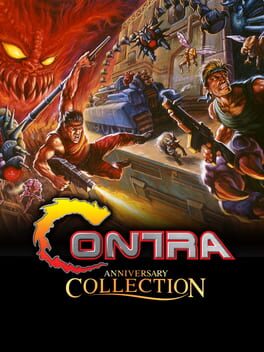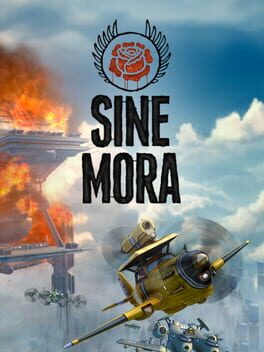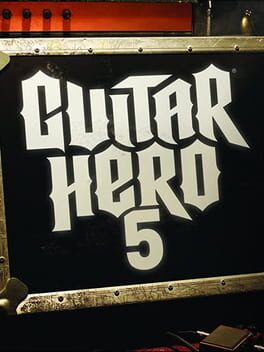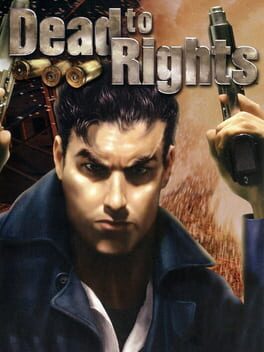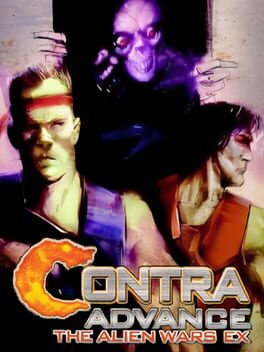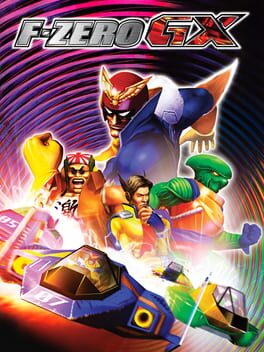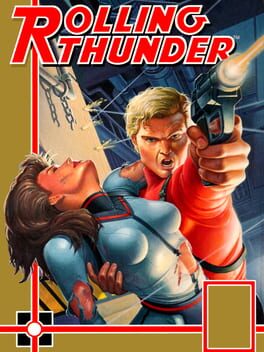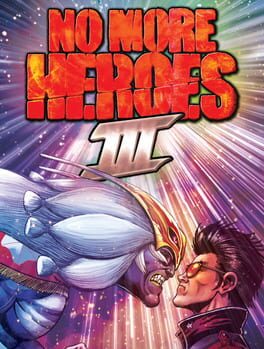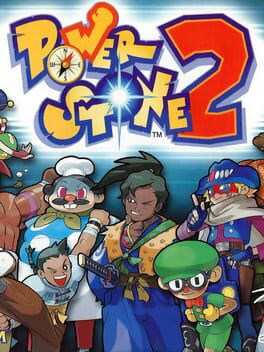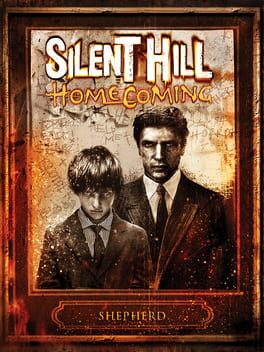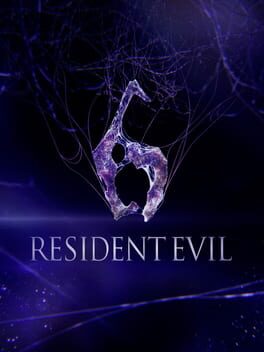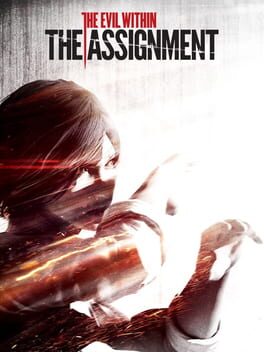This review doesn't have anything to do with the quality of each game, and I've actually reviewed them all separately on this site. This is more in regards to the collection itself and its presentation.
For the absolute bare minimum a port collection needs to be, it clears it perfectly well. This is the least I expect from M2, who are absolute porting wizards. I also appreciate the inclusion of the Japanese and European 'Probotector' versions of their respective games, as well as making said EU versions 60hz in order to make these games function the way they were supposed to. And as someone that doesn't agree with the notion of a rewind function being necessary for ports of 2D games, I'm perfectly satisfied without it. If I really want to practice a stage, the single save state they provide for each game is enough for me.
Regarding extras, it isn't anything groundbreaking, but the extensive interview with Nobuya Nakazato was greatly appreciated! He may not be the creator of Contra, but he IS the reason it evolved into an action-packed run-n-gun monster, being the director of Contra 3, Contra Hard Corps, and Contra Shattered Soldier! His insight and look back on these games was very refreshing, and I'm happy to see he's still active and thinking about Contra.
A complaint I have is the fact that Contra Hard Corps' controls weren't changed at all. I know it just takes getting used to, believe me. I've legitimately cleared the game multiple times with no save states. But it's hard when the majority of the games in this series are closest to Contra 3, a game that utilized a 6-button pad. M2 has been known to tweak and improve small things in the games they're porting/remastering, so I wish they were able to do something in that regard. Of course, it could be a deep level of programming I don't understand being the reason it wasn't possible under them. So I won't give them much flack.
One more complaint--and something I do find necessary for these collections--is the cover art. I think they should always bare a new cover art celebrating the history of whatever game it's a collection for, whether it be a new artist or previous returning. Instead, they just used the Tom DuBois piece from Contra 3's US cover. However, a new cover WAS made . . . for the Limited Run release. Fuck Limited Run. Thanks for reading.
For the absolute bare minimum a port collection needs to be, it clears it perfectly well. This is the least I expect from M2, who are absolute porting wizards. I also appreciate the inclusion of the Japanese and European 'Probotector' versions of their respective games, as well as making said EU versions 60hz in order to make these games function the way they were supposed to. And as someone that doesn't agree with the notion of a rewind function being necessary for ports of 2D games, I'm perfectly satisfied without it. If I really want to practice a stage, the single save state they provide for each game is enough for me.
Regarding extras, it isn't anything groundbreaking, but the extensive interview with Nobuya Nakazato was greatly appreciated! He may not be the creator of Contra, but he IS the reason it evolved into an action-packed run-n-gun monster, being the director of Contra 3, Contra Hard Corps, and Contra Shattered Soldier! His insight and look back on these games was very refreshing, and I'm happy to see he's still active and thinking about Contra.
A complaint I have is the fact that Contra Hard Corps' controls weren't changed at all. I know it just takes getting used to, believe me. I've legitimately cleared the game multiple times with no save states. But it's hard when the majority of the games in this series are closest to Contra 3, a game that utilized a 6-button pad. M2 has been known to tweak and improve small things in the games they're porting/remastering, so I wish they were able to do something in that regard. Of course, it could be a deep level of programming I don't understand being the reason it wasn't possible under them. So I won't give them much flack.
One more complaint--and something I do find necessary for these collections--is the cover art. I think they should always bare a new cover art celebrating the history of whatever game it's a collection for, whether it be a new artist or previous returning. Instead, they just used the Tom DuBois piece from Contra 3's US cover. However, a new cover WAS made . . . for the Limited Run release. Fuck Limited Run. Thanks for reading.
2012
A pretty good shmup with tough patterns and gratifying weapons. The large enemy designs are also pretty charming, and I'm kind of a sucker for andromorphic characters that look groaty and disheveled. It makes them feel more real, if that makes sense. The story they carry is also mildly interesting, with gripping bits here and there. I also like that they kept the original Hungarian voice-acting.
The challenge of the bosses and their projectile trajectory is the real meat, and the game's story mode is pretty lenient with its continues and checkpoints. Apparently diagonal bullets are considered bad faux pas, but I wouldn't really know, this is not my subgenre at all.
The atmosphere is what helps me remember this game, goes for a good tech-y steampunk vibe, and Akira Yamaoka's contributions as head composer shine throughout.
The challenge of the bosses and their projectile trajectory is the real meat, and the game's story mode is pretty lenient with its continues and checkpoints. Apparently diagonal bullets are considered bad faux pas, but I wouldn't really know, this is not my subgenre at all.
The atmosphere is what helps me remember this game, goes for a good tech-y steampunk vibe, and Akira Yamaoka's contributions as head composer shine throughout.
2009
A rhythm game that was so shitty, Courtney Love sued Activision over it. No wait, it's because they let the Kurt Cobain model be utilized for any song, not just the Nirvana tracks.
I'm not going to give Guitar Hero 5 points for "playing just fine" since it changed literally none of its format from 4. That work was already done for them. The visual aspect is so lacking and oddly dark, and all the guest appearances feel pathetically hollow, more so than in the previous game.
I'm not going to give Guitar Hero 5 points for "playing just fine" since it changed literally none of its format from 4. That work was already done for them. The visual aspect is so lacking and oddly dark, and all the guest appearances feel pathetically hollow, more so than in the previous game.
2007
A good little overhead car combat-ish game by the veterns behind the original Twisted Metal games. Calling All Cars has some charm to it, and the game feels damn good to play! I just think as a whole package it felt a bit lacking. It continues to be shunned as one of those early PS3 download-only games.
It's sitting in a pile of a whole bunch of other IPs Sony fully-owns but never ported to anything else, thus rotting in its obscurity. Why games like Dead Nation can continue to live onward on PS4/5 but this remains inside PS3's download-only hell is beyond me.
It's sitting in a pile of a whole bunch of other IPs Sony fully-owns but never ported to anything else, thus rotting in its obscurity. Why games like Dead Nation can continue to live onward on PS4/5 but this remains inside PS3's download-only hell is beyond me.
2002
Among the various games that heavily derived from Max Payne's rumbling entrance with its gritty third-person shooter-focused combat, Dead to Rights is probably the best one. It's a pretty simple game that stands out with its quirks and diverse pace-breaking sections that require you to disarm bombs, jimmy-open doors, etc. Also, the unique mechanic of sending out your dog to maul unsuspecting goons and create new paths for our armed protagonist are also fun and add more diversity to the gameplay.
The story isn't exactly groundbreaking either, but it sets the mood right as a tale of pure revenge that sets Jack Slate on a path that unveils crooked capitalists and citywide plans of corruption and greed . . . huh, that all sounds a little too familiar.
Overall, the gunplay is really satisfying, it always encourages you to act fast and tear through your enemies, and its lock-on function is more than handy. Some of the mini-games stay their welcome a little too long at times, though. This all made for a fun package when I was just a teenager craving more gritty goodness, but these days I won't argue when someone describes how unremarkable it is these days.
The story isn't exactly groundbreaking either, but it sets the mood right as a tale of pure revenge that sets Jack Slate on a path that unveils crooked capitalists and citywide plans of corruption and greed . . . huh, that all sounds a little too familiar.
Overall, the gunplay is really satisfying, it always encourages you to act fast and tear through your enemies, and its lock-on function is more than handy. Some of the mini-games stay their welcome a little too long at times, though. This all made for a fun package when I was just a teenager craving more gritty goodness, but these days I won't argue when someone describes how unremarkable it is these days.
A very odd quasi-remake of the original Contra 3 port on Gameboy, hence why it has such a weird name. Contra 3 was already ported to Gameboy like a decade before as Contra: The Alien Wars. But this was for the Gameboy Advance, so it added "Advanced" and "EX" to the title.
And I dig what they were going for! This wasn't just slapping a rom file into a GBA (it probably couldn't do that anyway), but instead a remake from the ground-up with crunched assets to make it palpable for the GBA's little screen.
A lot of people say the most interesting aspect is the mode-7 stages were replaced with side-scrolling stages from Contra: Hard Corps. And while that is neat in its own right, it makes for a bizarre clash in art styles since that original Genesis game looked so wildly different from its SNES predecessor. I suppose Konami didn't want to foot the bill to recreate the mode 7 stages with the GBA's 3D capabilities (yeah, the damn thing could actually render stuff in 3D, crazy right?)
Something else I think is interesting about this bite-size packaged Contra game is how they included the strafing mechanic first seen in Contra: Shattered Soldier on PS2. It kinda tells me the people involved in this little game wanted it to at least feel good to play, just a cool feature to add when they really didn't have to.
Regardless, it's an annoying, claustrophobic port of Contra 3, and I just don't really enjoy playing it. With portable gaming no longer having its own identity these days, the novelty is gone. You can buy the Anniversary Collection for next-to-nothing on Switch. You can get Nightly PCSX2 to run Shattered Soldier flawlessly on your Steam Deck. This no longer has purpose.
And I dig what they were going for! This wasn't just slapping a rom file into a GBA (it probably couldn't do that anyway), but instead a remake from the ground-up with crunched assets to make it palpable for the GBA's little screen.
A lot of people say the most interesting aspect is the mode-7 stages were replaced with side-scrolling stages from Contra: Hard Corps. And while that is neat in its own right, it makes for a bizarre clash in art styles since that original Genesis game looked so wildly different from its SNES predecessor. I suppose Konami didn't want to foot the bill to recreate the mode 7 stages with the GBA's 3D capabilities (yeah, the damn thing could actually render stuff in 3D, crazy right?)
Something else I think is interesting about this bite-size packaged Contra game is how they included the strafing mechanic first seen in Contra: Shattered Soldier on PS2. It kinda tells me the people involved in this little game wanted it to at least feel good to play, just a cool feature to add when they really didn't have to.
Regardless, it's an annoying, claustrophobic port of Contra 3, and I just don't really enjoy playing it. With portable gaming no longer having its own identity these days, the novelty is gone. You can buy the Anniversary Collection for next-to-nothing on Switch. You can get Nightly PCSX2 to run Shattered Soldier flawlessly on your Steam Deck. This no longer has purpose.
2003
F-Zero GX hit everything I wanted in a racing game all at once! The gameplay, the controls, the course designs, the music, the sound effects, everything just felt so damn perfect! It's almost humiliating the way one of Nintendo's own franchises reached such a level of brilliance by the likes of SEGA!
I adored every ounce of this game, most especially how intense and difficult the racing became on higher-difficulties, asking you to hone every single essence of your elite racing skills against bot racers with an endless supply of rubber bands! The tight feeling of driving your car and every teeny-tiny movement you'd make aligning with it was incredible. This game asked for surgery-levels of precision and air-tight focus above all else.
While F-Zero X felt just right with its heavy metal vibe, the hard-hitting techno in F-Zero GX fit neatly in this futuristic hell of tall buildings and industrial venues. Looking back almost 20 years later, it's still unbelievable how well this game aged and how much of it holds up. I sometimes don't need to wonder why they haven't made a legitimate successor to this, it's basically impossible!
I adored every ounce of this game, most especially how intense and difficult the racing became on higher-difficulties, asking you to hone every single essence of your elite racing skills against bot racers with an endless supply of rubber bands! The tight feeling of driving your car and every teeny-tiny movement you'd make aligning with it was incredible. This game asked for surgery-levels of precision and air-tight focus above all else.
While F-Zero X felt just right with its heavy metal vibe, the hard-hitting techno in F-Zero GX fit neatly in this futuristic hell of tall buildings and industrial venues. Looking back almost 20 years later, it's still unbelievable how well this game aged and how much of it holds up. I sometimes don't need to wonder why they haven't made a legitimate successor to this, it's basically impossible!
1986
The most interesting aspect of this game is its core mechanics. It's a side-scrolling shooter that's very straight-forward. The challenge comes from controlling your character and determining how the oncoming enemies will react. You can also use the surrounding environment to your advantage by hiding behind obstacles, and even using doors and upper floors (Mr. Thunder here can scale entire stories if he really tried).
I find it intriguing how closely this concept relates to Time Crisis, which almost has the same exact narrative. There's also the mechanic of hiding behind crates and walls and such using the foot pedal in that original first-person on-rails arcade shooter. Unfortunately, Rolling Thunder itself is off to an insanely rocky start as most of the game feels completely unfair past the first level. And infinite credits does little to help you clear it, considering you have to restart the stage or its middle checkpoint (if you reached it) after getting killed.
I find it intriguing how closely this concept relates to Time Crisis, which almost has the same exact narrative. There's also the mechanic of hiding behind crates and walls and such using the foot pedal in that original first-person on-rails arcade shooter. Unfortunately, Rolling Thunder itself is off to an insanely rocky start as most of the game feels completely unfair past the first level. And infinite credits does little to help you clear it, considering you have to restart the stage or its middle checkpoint (if you reached it) after getting killed.
2021
It's great, it's bad, it's enthralling, it's confusing, it's a goddamn Suda51 game. Granted, one that falls short in some aspects. No More Heroes III is a culmination of Suda51 emphasizing harder than ever what he was trying to say with the original No More Heroes. The idea that an endless life of slashing, killing, and achieving is nothing short of hell-on-earth. Which in turn, works in both the depiction of Travis' own character that's accumulated these past 15 years, and an ongoing video game franchise. This "hell-on-earth" is already a reality for once-beloved franchises.
You're asking why is a theme of absolute monotony being exhausted in a game directed by Suda51? I guess you didn't play a lot the games he actually directed. I guess you didn't walk for virtual miles just to be told to run back to where you came in Flower, Sun, and Rain. I guess you weren't demanded to climb through 10 huge towers and check each individual room for small clues in The Silver Case (not even including the similar tasks before that near-end chapter). I guess you weren't told to check-in on every single apartment door in a huge complex in Moonlight Syndrome.
I refrain from using the phrase "shitty on purpose" because I feel like that degrades the point a creator is trying to get across when their top priority of a game isn't pure enjoyment from beginning to end. Not that this game can't provide that for some folks (the score it has is honestly surprising here). I'm just interpreting some of the game's rather confusing design choices. I don't think it's just sheer incompetency, considering this company's output.
I loved deciphering the narrative, and was happy to see the final cleanse of the NMH sickness Suda has been dealing with, finally declaring his end of this relationship. I think a lot of it is very congruent if you take the time to dissect and analyze the scenes. Granted, there are aspects of the writing that feel short-sighted. As for the gameplay, it was pretty damn enthralling, and easily the most intricate the series has provided in regards to third-person hack-n-slash combat. It can be argued that it was designed more-so for the boss confrontations, which is also the best the series has ever been. The open world is charming in some ways, but also considerably rough.
I also appreciate Grasshopper refusing to conform to modern standards and accept its blotchy-ass textures in order to focus on the artistry. I won't deny how rickety some things look, but the game shines and glows at the points where it needs to, in my opinion. Music was aces too, but I am certainly sick and tired of listening to Beast Test.
All-in-all, there's things I love about this game, and things I question. But the heart I look for in a Grasshopper game is certainly still there and beating. And in the end, I also find it amusing that Travis Strikes Again ended up being the better and more worthwhile game.
You're asking why is a theme of absolute monotony being exhausted in a game directed by Suda51? I guess you didn't play a lot the games he actually directed. I guess you didn't walk for virtual miles just to be told to run back to where you came in Flower, Sun, and Rain. I guess you weren't demanded to climb through 10 huge towers and check each individual room for small clues in The Silver Case (not even including the similar tasks before that near-end chapter). I guess you weren't told to check-in on every single apartment door in a huge complex in Moonlight Syndrome.
I refrain from using the phrase "shitty on purpose" because I feel like that degrades the point a creator is trying to get across when their top priority of a game isn't pure enjoyment from beginning to end. Not that this game can't provide that for some folks (the score it has is honestly surprising here). I'm just interpreting some of the game's rather confusing design choices. I don't think it's just sheer incompetency, considering this company's output.
I loved deciphering the narrative, and was happy to see the final cleanse of the NMH sickness Suda has been dealing with, finally declaring his end of this relationship. I think a lot of it is very congruent if you take the time to dissect and analyze the scenes. Granted, there are aspects of the writing that feel short-sighted. As for the gameplay, it was pretty damn enthralling, and easily the most intricate the series has provided in regards to third-person hack-n-slash combat. It can be argued that it was designed more-so for the boss confrontations, which is also the best the series has ever been. The open world is charming in some ways, but also considerably rough.
I also appreciate Grasshopper refusing to conform to modern standards and accept its blotchy-ass textures in order to focus on the artistry. I won't deny how rickety some things look, but the game shines and glows at the points where it needs to, in my opinion. Music was aces too, but I am certainly sick and tired of listening to Beast Test.
All-in-all, there's things I love about this game, and things I question. But the heart I look for in a Grasshopper game is certainly still there and beating. And in the end, I also find it amusing that Travis Strikes Again ended up being the better and more worthwhile game.
I'm more than convinced this game's early reception was heavily influenced by Game Informer giving this game a goddamn 10/10--an extremely rare score back in the day--in their 2004 issue reviewing this game. Ratchet and Clank 3 is still pretty good, and I gotta give props that they fixed the lava gun upgrade.
So yeah, when I was like 14, this game rocked! Sure! I was there in the big craze of online multiplayer mayhem, and played the absolute SHIT out of this game's siege and CTF. I'm pretty sure I was one of the top-ranked players (4-bolt bois REPRESENT!). So I can't even deny that, as someone that played every single R&C game (even the mobile ones), 3 is probably what I played the most, if we're to include multiplayer hours.
However, the campaign itself is one of the weakest of the series. It's full of your zip-zaps and ka-booms, so the dopamine you get from the visual aspect is still top-notch. It's the platforming, variety, and overall narrative I found weak. Ratchet and Clank 2 was already leaning a little too heavily on gun-toting action, but now 3 embraces it even more without even evolving that aspect of it in any meaningful way. The prices for the guns and upgrades were a little more fair, I guess?
Still, it's a fun game to blast through. But I feel like anyone that's playing through the series immediately one after the other will notice the disparity between these games the most.
So yeah, when I was like 14, this game rocked! Sure! I was there in the big craze of online multiplayer mayhem, and played the absolute SHIT out of this game's siege and CTF. I'm pretty sure I was one of the top-ranked players (4-bolt bois REPRESENT!). So I can't even deny that, as someone that played every single R&C game (even the mobile ones), 3 is probably what I played the most, if we're to include multiplayer hours.
However, the campaign itself is one of the weakest of the series. It's full of your zip-zaps and ka-booms, so the dopamine you get from the visual aspect is still top-notch. It's the platforming, variety, and overall narrative I found weak. Ratchet and Clank 2 was already leaning a little too heavily on gun-toting action, but now 3 embraces it even more without even evolving that aspect of it in any meaningful way. The prices for the guns and upgrades were a little more fair, I guess?
Still, it's a fun game to blast through. But I feel like anyone that's playing through the series immediately one after the other will notice the disparity between these games the most.
2000
There's virtually 0 records regarding the production of Power Stone 2, but if the likes of Itsuno or whomever else in the team said what they released was an unfinished beta, I wouldn't be surprised at all. Almost every single angle of this game expresses an idea they didn't fully commit to. From the oversimplified combat, to the laughably short arcade mode, lack of a story or character endings, and menus that are drab and lifeless if not just taken from Power Stone 1's assets. Something tells me that item shop and mixing mechanic is what they sunk most of their time into, and realized they had no time or budget left to make the rest of the game.
But even with all that, the expanded 4-player fights can be fun, it becomes quite a romp with the much more dynamic stages! This can definitely be a good time with friends, I just wish it was a more fleshed-out game. There's aspects that make it an overall weaker product to the original Power Stone, most especially its core design.
But even with all that, the expanded 4-player fights can be fun, it becomes quite a romp with the much more dynamic stages! This can definitely be a good time with friends, I just wish it was a more fleshed-out game. There's aspects that make it an overall weaker product to the original Power Stone, most especially its core design.
The Silent Hill game that was so trash, Japan didn't even want it. It is almost indescribable how offensively far a dev team can miss the point of an established series. Some would say it was their emphasis on adding depth to the combat, but I argue that it's only worse than the original games.
And the shitstorm doesn't stop there, the entirety of its visuals range between ugly walls of rust or drabs of grey, making exploring negative fun. The story manages to be nonsensical and over-simplistic at the same time, none of the characters are unique or even remotely charming, their obsession with blood and gore is just obnoxious, and the enemy designs can be narrowed down to naked depictions of birth/brother symbolism. It's all just so abhorrent.
The only people I imagine appreciating this game are ones that played it when they were young. As someone that was just catching up to the SH train back in 2008, I was dumbfounded by how awful this game turned out.
And the shitstorm doesn't stop there, the entirety of its visuals range between ugly walls of rust or drabs of grey, making exploring negative fun. The story manages to be nonsensical and over-simplistic at the same time, none of the characters are unique or even remotely charming, their obsession with blood and gore is just obnoxious, and the enemy designs can be narrowed down to naked depictions of birth/brother symbolism. It's all just so abhorrent.
The only people I imagine appreciating this game are ones that played it when they were young. As someone that was just catching up to the SH train back in 2008, I was dumbfounded by how awful this game turned out.
2012
I was ready to hate this game like everyone else. I was still coming from the low that was Resident Evil 5, unhappy that they took the RE4 formula and morphed it into a what felt like a half-baked co-op 'meh'-fest. And Resident Evil 6 looked even stupider from the previews. And in the end? I actually had a lot of fun.
The one thing I find silly is how much people dog on the story being "so stupid" and I'm sitting here thinking "How is that new?" I've enjoyed parts of RE's stories, but as a whole they're usually very weak. And RE6 just sort of throws on that dunce cap and dances across a light show of the most immense pyrotechnics you've ever seen. Granted, the tone of the game isn't as goofy as that of RE4.
The gameplay takes some getting used to, I feel like Japanese developers have a somewhat tougher time with designing third-person shooters. And I didn't want them to just rehash RE4's design, obviously. So instead they rebuilt the design from the ground-up and made for some great options during combat. I love how the melee attacks worked, the stamina bars made it so you can unleash it without being prompted, but you had to be more strategic. Blasting through the co-op with a friend as well as this game's horde mode made for quite a treat, in my opinion.
All-in-all, I appreciated the unique angles each scenario took, but I understand the game isn't exactly for everyone. And there's enough low notes that take a noticeable amount away from the experience. Still, I appreciated Capcom's attempt to recreate the third-person combat experience this series was dishing out.
The one thing I find silly is how much people dog on the story being "so stupid" and I'm sitting here thinking "How is that new?" I've enjoyed parts of RE's stories, but as a whole they're usually very weak. And RE6 just sort of throws on that dunce cap and dances across a light show of the most immense pyrotechnics you've ever seen. Granted, the tone of the game isn't as goofy as that of RE4.
The gameplay takes some getting used to, I feel like Japanese developers have a somewhat tougher time with designing third-person shooters. And I didn't want them to just rehash RE4's design, obviously. So instead they rebuilt the design from the ground-up and made for some great options during combat. I love how the melee attacks worked, the stamina bars made it so you can unleash it without being prompted, but you had to be more strategic. Blasting through the co-op with a friend as well as this game's horde mode made for quite a treat, in my opinion.
All-in-all, I appreciated the unique angles each scenario took, but I understand the game isn't exactly for everyone. And there's enough low notes that take a noticeable amount away from the experience. Still, I appreciated Capcom's attempt to recreate the third-person combat experience this series was dishing out.
2003
The successor to Frequency, which saw many improvements. Including a visual style that isn't senseless, more popular songs (likely from Sony's publishing power), and a more refined design that more heavily promoted perfect runs and chains. Granted, the latter was still exceedingly tough on higher difficulties.
There isn't much to speak of outside of this, as there's no real narrative. My one complaint is that the lanes get a little too "hill-y" and make it more difficult to see the oncoming notes. Regardless, this was still a solid rhythm game with a unique design, and something that would creep up in Harmonix's career from time-to-time while in the midst of their Rock Band craze.
There isn't much to speak of outside of this, as there's no real narrative. My one complaint is that the lanes get a little too "hill-y" and make it more difficult to see the oncoming notes. Regardless, this was still a solid rhythm game with a unique design, and something that would creep up in Harmonix's career from time-to-time while in the midst of their Rock Band craze.
One half a whole extra story that occurs beyond Sebastian's head-splitting horror-coaster, The Assignment follows his mostly-absent partner Kidman, and depicting her own nightmares come to life. The concept of this as a bonus feature is something I welcome. To a degree, I compare it to the Maria segment included in the Xbox/PC release of Silent Hill 2 (which made its way to the "Greatest Hits" redistribution of the game on PS2). Or perhaps it'd be more comparable if Eddie or Angela received their own playable scenarios.
Even so, this DLC chapter provides a much heavier emphasis on stealth, as Kidman is usually without a weapon. All while being pursued by creatures unique to her story, most notably Shade, a tall slender-legged creature with a spotlight for a face. Another piece of Nakamura brilliance.
All-in-all, this chapter began answering questions left pretty vague in the original game, helping people better understand the story . . . you know, if they're willing to.
Even so, this DLC chapter provides a much heavier emphasis on stealth, as Kidman is usually without a weapon. All while being pursued by creatures unique to her story, most notably Shade, a tall slender-legged creature with a spotlight for a face. Another piece of Nakamura brilliance.
All-in-all, this chapter began answering questions left pretty vague in the original game, helping people better understand the story . . . you know, if they're willing to.
